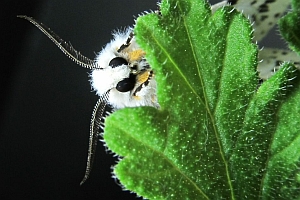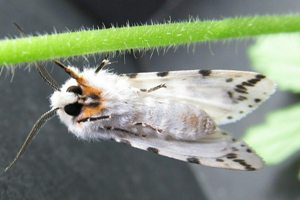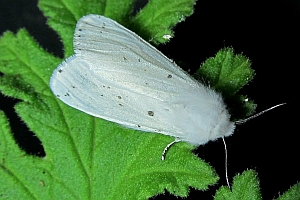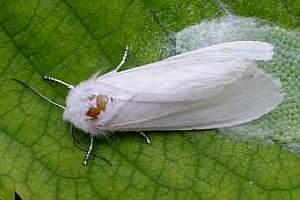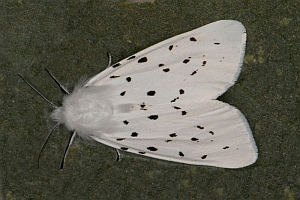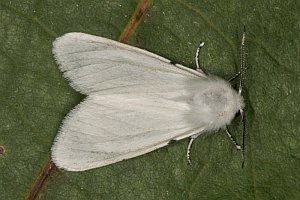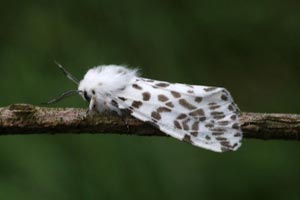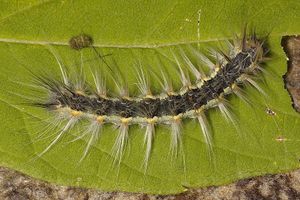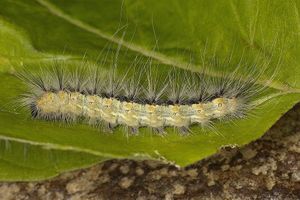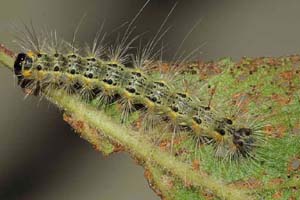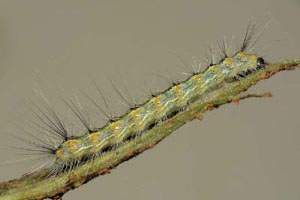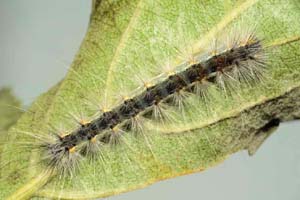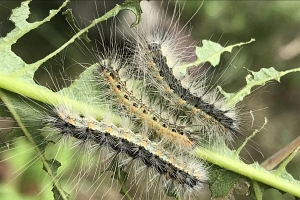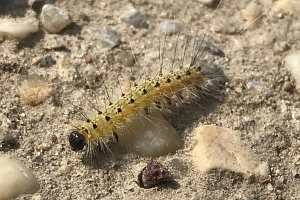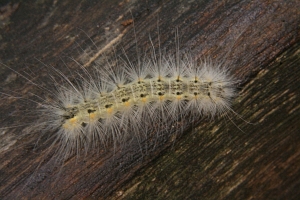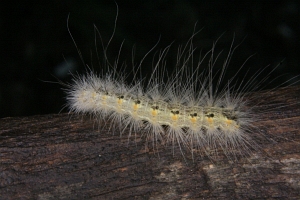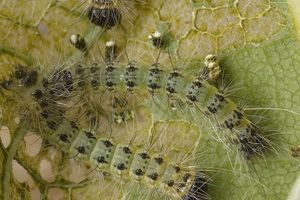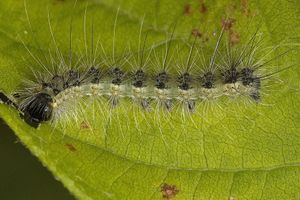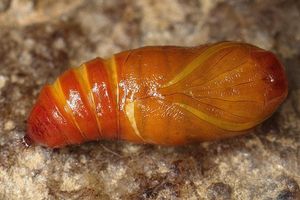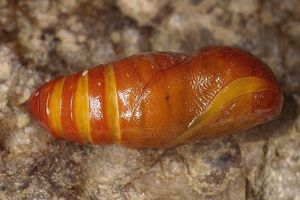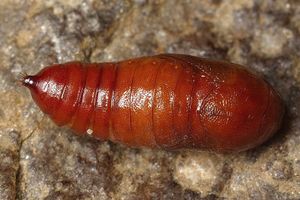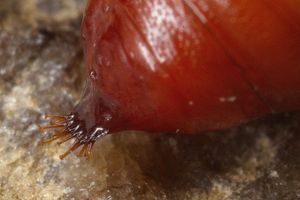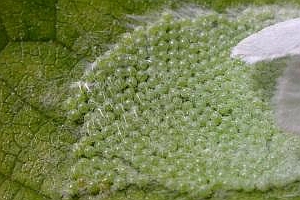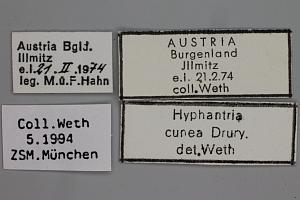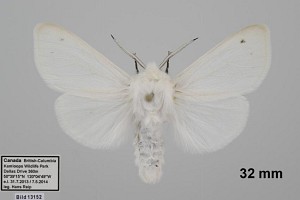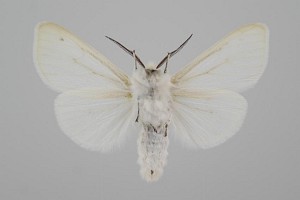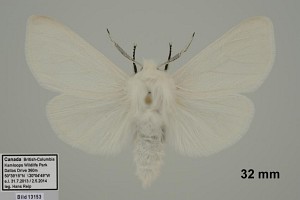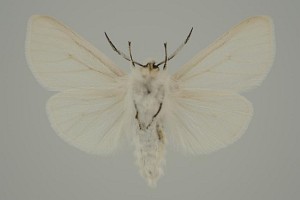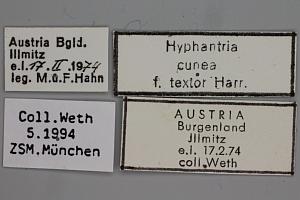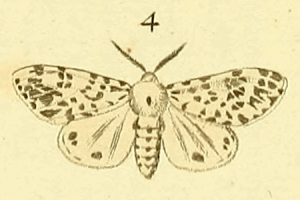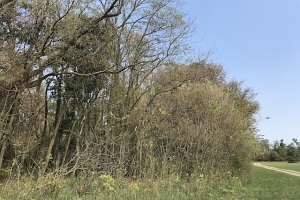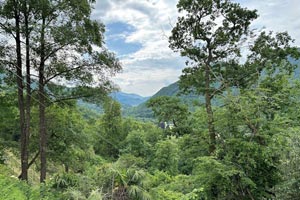

 +26Kontinente:EUASNA
+26Kontinente:EUASNA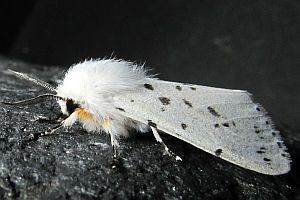

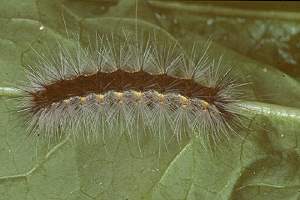
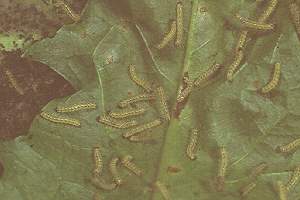
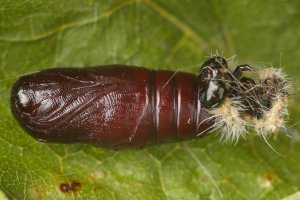
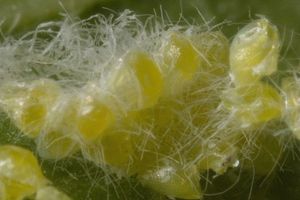

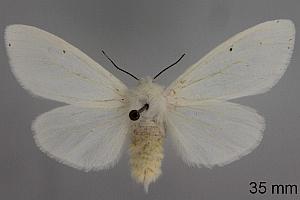

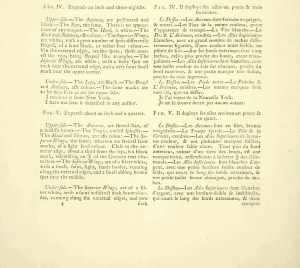
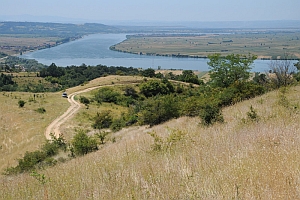
1. Lebendfotos
1.1. Falter
1.2. Eiablage
1.3. Ausgewachsene Raupe
1.4. Jüngere Raupenstadien
1.5. Puppe
1.6. Ei
2. Diagnose
2.1. Männchen
2.2. Weibchen
2.3. Erstbeschreibung
2.4. Bezug der Indikation darin und Text dazu
3. Biologie
3.1. Habitat
4. Weitere Informationen
4.1. Andere Kombinationen
- Phalaena cunea Drury, 1773 [Originalkombination]
4.2. Synonyme
- Phalaena liturata Goeze, 1781
- Phalaena punctatissima Smith, 1797
- Cycnia budea Hübner, 1823
- Hyphantria textor Harris, 1841
- Spilosoma mutans Walker, 1856
- Hyphantria collaris Fitch, 1857
- Hyphantria punctata Fitch, 1857
- Arctia pallida Packard, 1864
- Spilosoma candida Walker, [1865]
- Hyphantria brunnea Strecker, 1900
4.3. Taxonomie
Die Erstbeschreibung bezieht sich ausschließlich auf den Falter, nicht auf die Raupe. Locus typicus ist "New York" im Nordosten der USA. Bald wurde zwischen der gefleckten Hyphantria cunea und der ungefleckten Hyphantria textor Harris, 1841 unterschieden - bis sich herausstellte, dass im wesentlichen die Temperatur im Puppenstadium über die Ausprägung der Fleckung entscheidet und genetische Aspekte nur eine untergeordnete Rolle spielen. Oliver (1964) stellte dann fest, dass es in den USA orangeköpfige und schwarzköpfige Raupen gibt, die sich auch im Verhalten und ihrer Entwicklungsdauer signifikant unterscheiden. Itô & Warren (1973) bestätigen das und erhielten ebenso F1- und F2-Raupen mit intermediärem Aussehen und Verhalten. Hebert et al. (2019) stellen mit einem tiefen innerartlichen Split von 3,7 % beim Barcoding fest, dass es sich wohl doch um zwei getrennte Arten handelt - die Zuchtergebnisse wiederum sprechen klar für innerartliche Variation. Da Hyphantria cunea aus New York beschrieben wurde und dort - wie in Europa - nur schwarzköpfige Raupen zu finden sind, spricht alles dafür, dass "die echte" H. cunea nach Europa verschleppt wurde - zumindest dann, wenn sich - wie es aussieht - die beiden Barcode-Typen mit den beiden unterschiedlichen Raupenformen decken. Yang et al. (2017) untersuchen diverse asiatische Barcoding-Tiere im Vergleich mit Nordamerika und bescheinigen die genetische Zusammengehörigkeit mit nordost-amerikanischen und kanadischen Tieren - orangeköpfige Tiere nutzen sie als Außengruppe ihrer Untersuchung und bezeichnen sie als "Hyphantria sp."
4.4. Faunistik
Locus typicus ist New York, wo nur die "black-headed form" der Raupe vorkommt. Ausschließlich diese wurde nach Japan und nach Europa verschleppt (Itô & Warren (1973)).
Geiter, Homma & Kinzelbach (2002) führen die Art als in Deutschland etabliertes Neozoon (Kategorie A), das nach 1940 aus Nordamerika eingeschleppt wurde. Huemer, P. & W. Rabitsch (2002) bezeichnen den Falter auch für Österreich als Neozoon, wo er nach der Einschleppung 1940 in Ungarn 1951 erstmals in Österreich gefunden wurde; dort ist er seither ganz auf den Osten des Landes beschränkt. Präzisere Angaben zur Invasion in Europa finden sich in Wittenberg (2005): Die Art sei in den 1940er Jahren in Ungarn aufgetreten und wurde in der Schweiz zuerst im Tessin 1991 gefunden.
(Autor: Erwin Rennwald)
4.5. Literatur
- Beshkov, S., Nahirnić-Beshkova, A. & P. Jakšić (2024): Contribution to knowledge of the Balkan Lepidoptera III. — Ecologica Montenegrina 73: 226-287. [PDF auf biotaxa.prod.amazon.auckland.ac.nz]
- Cao, L.M., Wang, X.Y., Petrice, T.R. & T.M. Poland (2024): A checklist of the predators and parasitoids of the fall webworm Hyphantria cunea (Drury) (Lepidoptera, Erebidae) from around the world. — Zookeys, 1211: 251-348. [zum Artikel mit PDF-Download auf zookeys.pensoft.net]
- Drury, D. (1770): Illustrations of Natural History. Wherein are exhibited Upwards of Two Hundred and Forty Figures of Exotic Insects, According to their different Genera; Very few of which have hitherto been figured by any Author, Being engraved and coloured from Nature, with the greatest Accuracy, and under the Author's own Inspection, On Fifty Copper-Plates. With a particular Description of each Insect: Interspersed with Remarks and Reflections of the Nature and Properties of many of them: i-xxvii, 1-130, pl. I-L. London.
- Erstbeschreibung: Drury, D. (1773): Illustrations of Natural History. Wherein are exhibited Upwards of Two Hundred and Twenty Figures of Exotic Insects, According to their different Genera; Very few of which have hitherto been figured by any Author, Being engraved and coloured from Nature, with the greatest Accuracy, and under the Author's own Inspection, On Fifty Copper-Plates. With a particular Description of each Insect: Interspersed with Remarks and Reflections of the Nature and Properties of many of them. Vol. II: i-vii, 1-90, pl. I-L, Index to the First Volume, Errata and Addenda to the First Volume [not paginated], Index to the Second Volume, Errata and Addenda to the Second Volume [not paginated]. London.
- Geiter, O, Homma, S. & R. Kinzelbach (2002): Umweltforschungsplan des Bundesministeriums für Umwelt, Naturschutz und Reaktorsicherheit. Forschungsbericht 296 89 901/01. UBA-FB 000215: Bestandsaufnahme und Bewertung von Neozoen in Deutschland Untersuchung der Wirkung von Biologie und Genetik ausgewählter Neozoen auf Ökosysteme und Vergleich mit den potenziellen Effekten gentechnisch veränderter Organismen. I-III, 1-74, Anhang 1 1-35, Anhang II 1-31, Anhang III 1-52 [PDF auf umweltbundesamt.de].
- Hebert, P.D.N., Waard, J.R. de & J.-F. Landry (2009): DNA barcodes for 1/1000 of the animal kingdom. — Biology Letters, 6: 359–362. [PDF auf royalsocietypublishing.org]
- Hemming, F. (1957): Opinion 474. Determination of the dates to be assigned for the purposes of the Law of Priority to the names published in Dru Drury's Illustrations of Natural History in the period 1770-1782. — Opinions and Declarations rendered by the International Commission on Zoological Nomenclature 16 (16): 297-306.
- Huemer, P. & W. Rabitsch (2002): 6.3.19 Schmetterlinge (Lepidoptera). - 354-362. In: Essl, F. & W. Rabitsch (2002): Neobiota in Österreich. - 432 S.; Umweltbundesamt, Wien. [pdf-Version auf univie.ac.at]
- Itô, Y. & L.O. Warren (1973): Status of Black-Headed and Red-Headed Types of Hyphantria cunea (Drury) (Lepidoptera : Arctiidae) : I. Biology of Two Types and Results of Crossing Experiment. — Applied Entomology and Zoology, 8 (3): 157-171. [PDF auf jstage.jst.go.jp]
- Oliver, (1964): A Behavioral Study of Two Races of the Fall Webworm, Hyphantria cunea, (Lepidoptera: Arctiidae) in Louisiana . — Annals of the Entomological Society of America, 57 (2): 192–194. [Abstract auf academic.oup.com]
- Seguna, A., Catania, A., Sammut, P. & J. J. Borg (2023): Hyphantria cunea (Drury, 1773) new for the Maltese Islands (Lepidoptera: Erebidae, Arctiinae, Arctiini). — Revista de lepidopterología 51 (202): 255-257. [PDF auf shilap.org]
- Wittenberg, R. (ed.) (2005): An inventory of alien species and their threat to biodiversity and economy in Switzerland. CABI Bioscience Switzerland Centre report to the Swiss Agency for Environment, Forests and Landscape. 416 S. [PDF-Dokument]
- Yang, F., Sendi, J.J., Johns, R.C. & M. Takeda (2017): Haplotype diversity of mtCOI in the fall webworm Hyphantria cunea (Lepidoptera: Arctiidae) in introduced regions in China, Iran, Japan, Korea, and its homeland, the United States. - Applied Entomology and Zoology, 52 (3): ##. DOI 10.1007/s13355-017-0491-2 [zur Arbeit und PDF-Download auf researchgate.net]

























